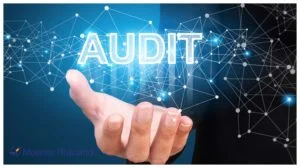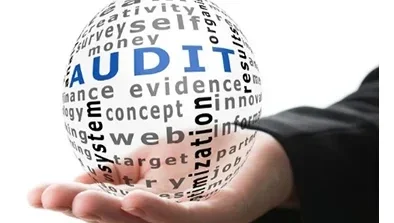Internal Audit's Role in Enhancing Business Transparency
A company encounters various challenges, one of which stands out as a distinguishing factor in the business world.
•
Jan. 29, 2024

A company encounters various challenges, one of which stands out as a distinguishing factor in the business world: the implementation of measures aimed at enhancing organizational efficiency and fostering greater transparency in the eyes of the market, partners, investors, employees, and other stakeholders.
In the current climate of "moralization" in our country, Brazil, the concept of "transparency" has become increasingly prevalent in negotiations and ranks among the top concerns for investors.
In practical terms, individuals or companies looking to invest their capital in any venture are increasingly aware that a higher degree of transparency provides greater assurance regarding the liquidity and profitability of their investment. This raises questions for those unfamiliar with technical terms about the key steps an organization should take to enhance its transparency.
Today, specialists and consultants use various terms related to transparency, with the most comprehensive being GRC: Governance, Risks, and Compliance. But what do each of these components of the acronym GRC signify?
Governance: It encompasses the processes, customs, policies, laws, regulations, and institutions that govern how a company is directed, managed, or controlled, according to the Brazilian Institute of Corporate Governance (IBGC).
Risks: These encompass all internal and external events to which an organization is exposed and which, if they materialize, can impact the business to varying degrees and intensities.
Compliance: This English term, also used in Brazil, denotes "conformity" or being in compliance with a set of norms, policies, laws, and procedures that guide an organization.
Different companies are at various stages regarding process structure, computerized systems, risk awareness, and control activity. Therefore, the adoption of governance measures must be carefully considered and structured to avoid making internal processes overly bureaucratic, which could lead to a loss of productivity and competitiveness. This is certainly not the aim of a proper GRC implementation process.
To enhance or establish transparency within an organization, commitment and engagement from top management are crucial, even more so than having an advanced control system. This commitment is essential to instill the need for adopting best practices and ethical conduct, aligned with the company's values, throughout the organization, especially among employees.
No business with expectations of a lucrative return on investment is devoid of risks. The goal is not to eliminate risks but to identify the primary areas and activities of the organization, ensuring that everyone involved is aware of these risks and has sufficient control measures in place to mitigate or reduce their likelihood of occurrence. For effectiveness and integrity, these control measures must be regularly reviewed, improved, and monitored.
Conducting risk mapping activities, implementing controls, and monitoring them necessitate an independent internal audit department. This department can consist of in-house professionals or be outsourced to a specialized auditing firm. The latter option is often the most valuable, efficient, and transparent.
Companies that subject their processes to internal audits gain greater recognition from investors, creditors, and the market. Furthermore, it serves as a fundamental tool for preventing and detecting corporate fraud, which currently represents a substantial loss of resources, assets, revenue, and reputation for organizations.
The misconception that maintaining an internal audit function is only applicable to large companies is entirely incorrect. This control mechanism can be effectively applied to small and medium-sized enterprises, taking into account their complexity and maturity levels. An efficient internal audit not only serves as a fundamental control tool but also helps identify inefficiencies, redundant functions, resource wastage, and financial losses due to inadequate cost management, while also pinpointing opportunities for process improvements.
Related

Technology and Automation in Accounting and Auditing: Adapting to a Digital-First Future
The world of accounting and auditing is being reshaped by cutting-edge technologies, bringing opportunities and challenges for professionals and businesses alike. From blockchain to artificial inte...
Read more
Financial Reporting and Analysis in 2024: Key Updates You Need to Know
Financial reporting today isn’t just about crunching numbers; it’s about telling the full story behind a company’s performance, future potential, and impact. With new standards emerging, evolving a...
Read more
Navigating the Evolving World of Audit and Assurance
The world of auditing is not what it used to be—it's faster, smarter, and more focused on risk and fraud than ever before. With new technologies and methodologies reshaping how audits are done...
Read more